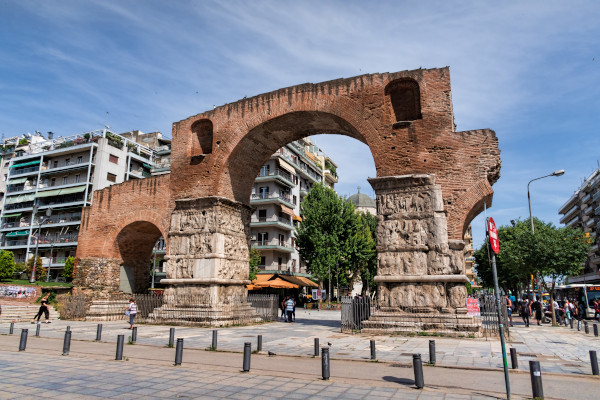The Arch of Galerius is one of the most characteristic monuments and undoubtedly one of the trademarks of Thessaloniki. It is called Kamara by the locals since that’s how the word Arch is translated in Greek. It is located on the north side of Egnatia street and very close to Rotonda another significant monument of the Roman era.
When the Arch of Galerius was built?
The arch was built in 298 to 299 AD and in 303 AD was dedicated to the celebration of Galerius victories over the Persians and his return to the city in 306 AD.
Originally, it was a bigger structure as it was an "Octapylon" (eight-pillar gateway) including a brick rubble masonry and marble sculptured panels. The central arch has an opening of 9,7 meters wide and 12,5 meters high, while the secondary arch has an opening of 4,8 meters wide and 6,5 meters high. Today, the two main marble pessaries and a smaller one are still standing and they depict sculptures of war scenes and battles.
During the Roman era the famous central street Via Regia was passing through the main arch, while for many decades, and more specifically until 1953, a city tram line was passing under Kamara. From that time, a series of maintenance and supporting projects were undertaken in order to save the monument from time and the smog of the center of the city.
What is the Arch of Galerius famous for in our days?
Kamara is an absolute meeting spot for locals, and especially younger people and students. Its location, fame, and size make even the newcomers or tourists setting it as a starting point for their exploring walk in Thessaloniki. It is always a vivid place and as an integral part of downtown, it follows the special notion and the life pace of the city.
